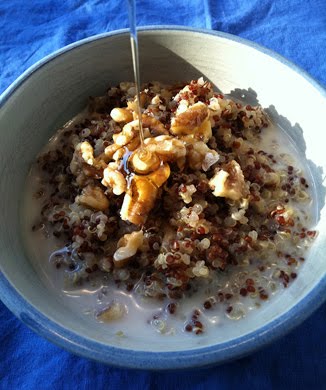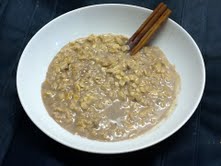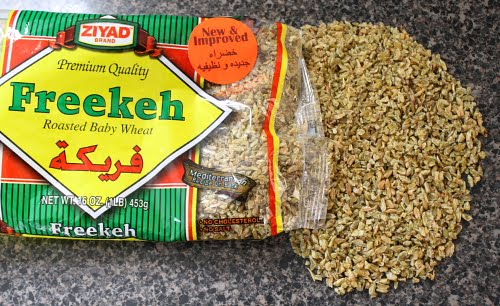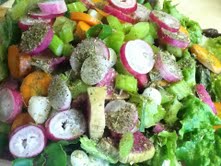At inCYST we love the Mediterranean diet! You saw the announcement about Meri Raffetto's book, The Mediterranean Diet Cookbook for Dummies.
Recently I've been experimenting with a part of the Mediterranean that is often overlooked in discussions about this cuisine…the southern shore, or North Africa. It's fabulous.
It all started when my friend Kate turned her house into a Moroccan lounge and hosted a potluck dinner, where all of the guests were challenged to bring a dish that fit into the theme. I had the opportunity to try some incredible combinations of sweet and savory, and started looking for other recipes to try. What I love about what I've found, is that the dishes tend to be packed with vegetables, and they're a powerhouse on your palate.
These dishes combine all of the foods we generally associate with the Mediterranean, with all of the spices that come from its location along one of history's major spice trading routes. You'll need to stock your kitchen with turmeric, all of the peppers, cinnamon, cumin, coriander, cloves, curry, fenugreek…before you get started. But I think you'll be pleased with what you get.
One of my favorite rules for eating out is to eat authentic ethnic. Those are the places you'll find the cuisines that keep healthy eating interesting and exciting. Northern African cuisine, whether it's Moroccan, Tunisian, is going to be a good bet for dinner out with friends that will keep everyone happy without anyone having to dissect the menu looking for something"healthy", which can be a buzzkill for any social outing.
Here is a recipe I recently tried that is going in my file to use again. It hit the spot on a cold winter night, fed me for several days, and did not leave me feeling like I needed to go searching for something after dinner because in the process of eating healthy I was not satisfied. It originally appeared in Sunset Magazine.
Pearl Couscous with Fall Vegetables and Caramelized Onions
Recipe Time
Total: 2 Hours, 30 Minutes
Amount per serving
Calories: 407
Protein: 11g
Fat: 7.2g
Saturated fat: 1g
Carbohydrate: 77g
Fiber: 7.4g
Sodium: 861mg
Cholesterol: 0.0mg
Ingredients
Caramelized Onions
2 medium onions, sliced thinly
1 tablespoon olive oil or butter
3/4 cup golden raisins
3/4 teaspoon ground cinnamon
1/2 teaspoon salt
1/2 teaspoon freshly ground black pepper
1 tablespoon honey
Couscous and vegetables
3 to 4 medium carrots
3 medium zucchini
1 jalapeño chile
4 small turnips
1 1/2 pounds butternut squash*
3 tablespoons olive oil or butter
1 1/2 teaspoons salt, divided
1/2 teaspoon freshly ground black pepper
1 teaspoon saffron threads
3/4 teaspoon cumin
2 cinnamon sticks
7 cups reduced-sodium vegetable stock
2 cups pearl (also sold as Israeli) couscous
About 1 tsp. harissa*
1/2 cup chopped cilantro
1. Make caramelized onions: Put onions in a large frying pan with 1/2 cup water, cover, and bring to a boil. Reduce heat to low and cook, covered, until softened, about 30 minutes. Remove cover and cook, stirring occasionally, until liquid has evaporated and onions are golden. Increase heat to medium-high, add olive oil, and cook, stirring, until deep golden. Meanwhile, soak raisins in hot water 15 minutes; drain.
2. Stir in spices and honey; then stir in raisins and cook, stirring, until nutty brown, about 5 minutes. Set aside.
3. Make couscous and vegetables: Halve carrots and zucchini; cut into 1 1/2-in. pieces. Halve jalapeño (seed it if you want less heat). Peel and quarter turnips. Peel and seed squash; cut into 1-in. chunks.
4. Heat olive oil in a large pot over medium heat. Add 1 tsp. salt, the pepper, saffron, cumin, and cinnamon sticks and fry, stirring, 1 minute. Add vegetable stock and bring to a boil. Add carrots, turnips, and jalapeño and simmer, covered, 15 minutes. Add squash and zucchini and cook, covered, until all vegetables are soft but not falling apart, about 20 minutes.
5. Transfer 2 cups hot stock from vegetable pot to a 4-qt. saucepan. Add 1 cup water and remaining 1/2 tsp. salt. Bring to a boil, stir in couscous, and cook, covered, until tender, 6 to 8 minutes.
6. Transfer 2 cups stock from vegetable pot to a pitcher and stir in harissa to taste.
7. Spread couscous on a platter, making a well in the center. Using a slotted spoon, arrange vegetables, including cinnamon sticks, in the well; discard jalapeño. Scatter onions on top and sprinkle with cilantro. Moisten the couscous with some stock and strain the rest into a second pitcher. Serve couscous and vegetables with the two stocks (plain and spicy) on the side.
*Buying cubed butternut squash will save you some time. Harissa's heat level varies wildly depending on the brand, so taste before adding.
Make ahead: Up to 1 day. Finish making all five components of the dish—caramelized onions, vegetables, couscous, harissa-spiked stock, and plain stock—and chill separately. Ten minutes before serving, reheat in a microwave and serve as directed.

































